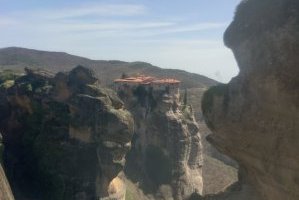
Visit: march the 14 and 15th,2025
Meteora is a first-class whs which plays in the top of the league.I visited all 7 monasteries ( 6 inside and one only from outside )
But first things first: on the 14th of march I took an ktel bus from Thessaloniki early in the morning to Kalampaka via Trikala where I arrived around 13.15.
I went straight to the tourist information office to get a map of the area. However, I accidentally walked into a travel agency, Meteora Travel. Well, I got a map from them and an offer for a so-called sunset tour at 3 p.m. and a hiking tour at 8 a.m. for the following day. Each tour for 35€, combined 60€.
Then I walked a couple of meters to the tourist information office, where I took a photo of the monastery's opening hours. Finally, I walked to Kastraki, where my accommodation was located. A good decision, as Kastraki is much more picturesque, pleasant, and closer to the trails than the larger and very touristy Kalampaka.
I hadn't had the intention to book a tour. Besides, the price just seemed too high to me. I mentioned this to the hotel owner. He immediately called another agency that only charged €25 for the so-called sunset tour. Apparently all sunset tours start at 3 p.m.
I'm not a fan of organized tours at all. Nevertheless, I accepted the offer. Shortly before 3:00 p.m., a minibus picked me …
Keep reading 0 comments
On a Wednesday morning (March 2025), I observed that the CGT building was open. I asked a man at the reception desk if my partner and I can take a look at the lobby. After taking a few photos and as we were about to leave, the man at the reception asked it we would like to see the "salas" and directed another staff person - who spoke no English - to take us around.
The voluntold guide then took us up a flight of stairs to Salon Felipe Vallesse, which is a medium sized auditorium. The auditorium contained 17 rows of seats, a raised platform with a table and a rostrum for speakers, murals around the room, photo portraits of Eva Peron and Juan Domingo Person, and a second-floor balcony at the rear. Our friendly guide directed us to sit at the speakers' table for a photo opportunity. Aesthetically speaking, the auditorium was no different than other dated utilitarian auditoriums from the mid-20th century.
Our guide than took us up another flight of stairs to Eva Peron's former office and current museum. As the museum is not open to the public, our guide first had to locate the key to it.
The museum is essentially three small rooms. The first room - which I would guess was originally the waiting room - displayed old newspaper clippings of Eva Peron, a few artifacts, and a life-sized figure of Juan Domingo Peron. Our guide directed us to stand …
Keep reading 0 commentsIn search of UNESCO sites, I have certainly visited more Spanish and Portuguese forts than any sane person would. And there’s not much unique about this one. However, it is similar to many enlisted properties and it was very historically important. To be exact, this is the oldest Spanish fort in North America (started in 1535) and was one of the most important during the colonial era, since Veracruz was the main seaport connecting Central America and Spain during the colonial era. Therefore I give this a thumbs up as a nomination. Given the revamped listing in 2022, I could see Mexico moving forward with a nomination. Plus, the east coast of Mexico is woefully without UNESCO sites compared to other areas of the country, and Veracruz itself was a pleasant city to visit
The fort is about 15 minutes from the historic center, and is actually part of a secured area for the navy/shipyard. I had a rental car to visit Tlacotaplan the following day, and so I drove myself. It would also be easy to take a taxi or a cheesy tourist boat from the malecon (about it ten minutes from the historic center). There were also group tours and a good number of buses. For self drive parking was 50 pesos per car, and entrance was another 100 per person. Since Veracruz is a big city with an international airport, this is very accessible. It’s also under two hours from Tlacotaplan, another UNESCO site. English was …
Keep reading 0 comments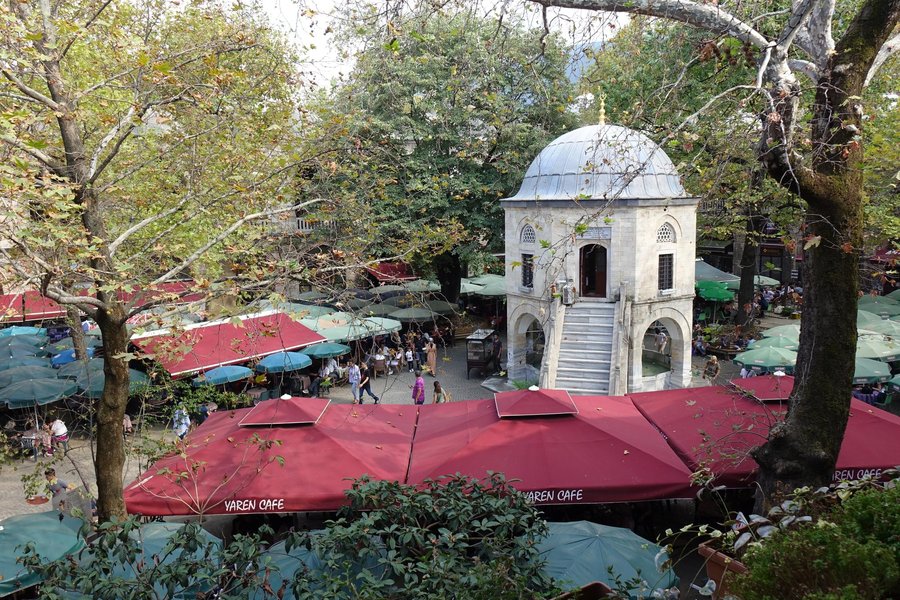
Bursa is easily accessible by ferry and/or bus from Istanbul, making it worth a day trip or two to see. I used the Moovit app to navigate the public transportation system, for which you can use a contactless credit card to pay for. The sights in the city center are easy to walk from one to another, but if you want to go to the village of Cumalikizik you will need to use transportation. There are minibuses and city buses you can use -- note that minibuses can't be found online (ask around to find them) and you will need to pay in cash. I used the city buses, though, and it worked out just fine.
Cumalikizik is very tourist-forward and has a bunch of stalls for buying different souvenirs, if that's something you would like to do. There are also hotels you can stay the night at, although I didn't feel it was necessary. The village is a popular breakfast spot. I would reccommend getting to try "karadut suyu" (black mulberry juice) from a local seller, it was really delicious! In the village, there is a small museum (no English signage) that is free of charge. I found it interesting, so I would recommend coming with a translate app if you don't speak Turkish. Additionally, there is a house you can enter (Küpeli Ev) for a price of 60 liras in February 2025. You have to pay in cash.
Keep reading 0 comments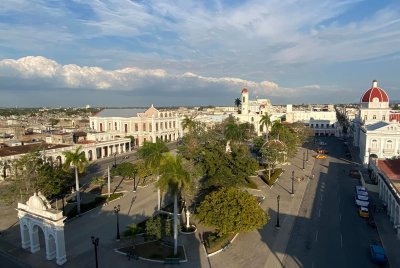
Visited in January 2023.
Cienfuegos, although founded late (1819), quickly became the center of the Cuban sugar industry, an important port through which the sweet gifts of the local nature were exported across the seas and oceans, enriching the local oligarchy. The city does not overlook the Caribbean Sea itself, but stands by the bay (just like Santiago or originally Havana), the narrow entrance to which was conveniently protected from pirates with the help of fortification systems. There is a small fortress here too. UNESCO, however, liked not the fortifications this time, but the urbanism. Cienfuegos is considered the first and one of the best examples of the embodiment of the urban planning ideas of the Spanish Enlightenment in Latin America. The preserved ensemble of classical buildings is really very nice, cozy, spacious and well-kept by Cuban standards. I especially recommend the Palacio Ferrer, where Enrico Caruso once performed, and on the rooftop you can sip daiquris and study the ensemble of the main square. Outside the "old city" is typical dilapidated Cuba.
Keep reading 0 comments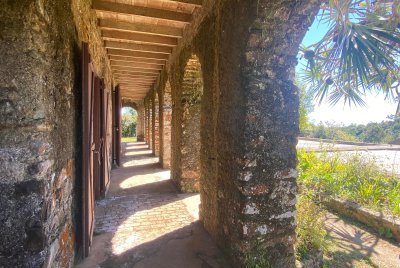
Visited in January 2023.
Coffee is certainly not a native crop for Cuba, and even the Spaniards who arrived preferred cocoa for a long time, but from the mid-18th century they tried to grow coffee, though not very successfully on the western plains. Everything changed at the end of the same century. On the neighboring island of Hispaniola (Haiti), where coffee production was quite successful, a slave revolution occurred, and those French planters who were not slaughtered by the former slaves escaped, including through the Windward Passage to neighboring Cuba. There, with the Spaniards, everything was still the same. The slaves did not rebel, and it was possible to continue to exploit their sweat and blood. It turned out that the Sierra Maestra mountains with their forests (the beans grew well in the shade of the trees) were much better suited for growing coffee than the plains. The landscape was difficult, it had to be transformed, but soon the slopes were covered with hundreds of new plantations. UNESCO also noted the efforts to transform the relief and the technological innovations that were born in this regard: transport infrastructure, irrigation systems, aqueducts, bridges, and so on. Like sugar ingenios, Cuban cafetals were arranged in roughly the same way. In the center is the planter's house in the Basque style, suitable for the climate, around it are the slaves' dwellings, a mandatory area for drying grain (secadero), outbuildings for cleaning and frying the product, workshops. Well, and fields, sometimes with orchards …
Keep reading 0 comments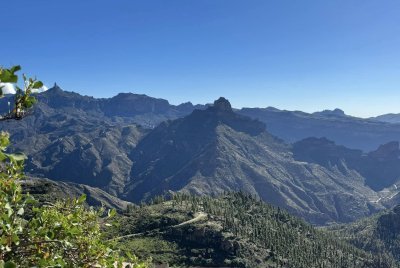
Visited in January 2024.
This object is dedicated to Guanche, original inhabitants of the islands, it is believed that they were Berbers who sailed from the lands of modern Morocco (although it is unclear how they sailed to the Canary Islands).The life of these aborigines was quite simple: they grazed sheep in the mountains, grew corn, used clay vessels, but did not own metals. They lived in caves, and this lifestyle was preserved even with the change of population until the 20th century.In the mountains of Gran Canaria, painted caves were also found, which were used for ritual purposes, since the carved triangles on the walls are recognized as symbolic vulvas, and the rituals are considered to be associated with the cult of fertility. But what they were - we can only guess, because the aboriginal population of the Canary Islands became extinct after the appearance of Europeans.One of the discovered caves is considered by scientists to be a kind of astronomical laboratory, as if the sun and the moon must have illuminated the holes in the cave differently. But again, this is just speculation.The original caves are closed to visitors, but in Artenara, a replica of the cave has been made in the visitor center, and it is a pretty cool format if the original is not available. You can also visit the ethnographic museum in the town, which shows how life in the caves has continued to our time. You can also look out over the surroundings …
Keep reading 0 comments
Møns Klint claims its OUV from the glacial landscape formation and being part of one of the world's largest glaciotectonic complexes. But much more significant what is described as “scenic value”, which means the cliff is simply nice to look at.
As the aesthetics are a big part of this, I selected a day for the visit I knew the sun would shine. We took a rental car from Copenhagen Airport and drove there, with a detour to Roskilde and a stop at the unimpressive Borgring. Once you are off the freeway, the drive is very scenic, with typical Danish landscape, great old houses and lots of green. You can drive to the GeoCenter Møns Klint, where there is parking (6 EUR for 1 day), walking paths and stairs to the beach.Getting there by public transport is possible I guess, but you would need to take a train to Vordingborg, a bus and still find a solution for the last 6km. So, I would not recommend it.
At the GeoCenter we opted for hike number 4, further up north along the cliff through the forest, down the stairs and back along the beach. The hike was fantastic, with great views at the cliff. I assume the views might be more restricted once all the trees have their leaves back. Unfortunately, the info board at the GeoCenter did not mention, that the stairs we were supposed to use as a turning point, were closed (and it seems not since …
Keep reading 1 comment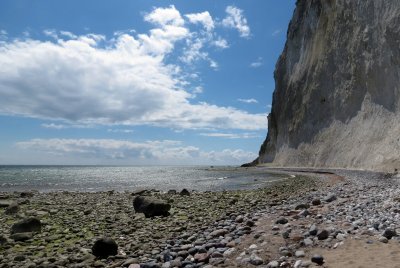
I visited Møns Klint on a beautiful summer day in 2016, followed by Stevns Klint (WHS) later that same day. While both are impressive, I remember talking to my fiancée about how Møns Klint should be a WHS (it wasn't even a TWHS at the time). It brings me again to a question I often wonder: some sites really have it all, but what makes a great WHS otherwise? Is it more about being spectacular even to a visitor who lacks background knowledge about the site's significance? Or does real value lie in historic/scientific/religious importance?
I must admit it's often the former for me. To take this example, I understand and appreciate that Stevns Klint is more significant in terms of geology but the maximum height of its cliffs is about 40 meters, while some cliffs at Møns Klint rise to about 120 meters. Plus with the great hiking trails through the woods, the viewpoints, the rocky beach and the pristine waters, it's simply stunning, probably the most beautiful place I've seen in Denmark. I'm not challenging the status of Stevns Klint as a WHS, but if it's on the list, Møns Klint should be there too.
Keep reading 0 comments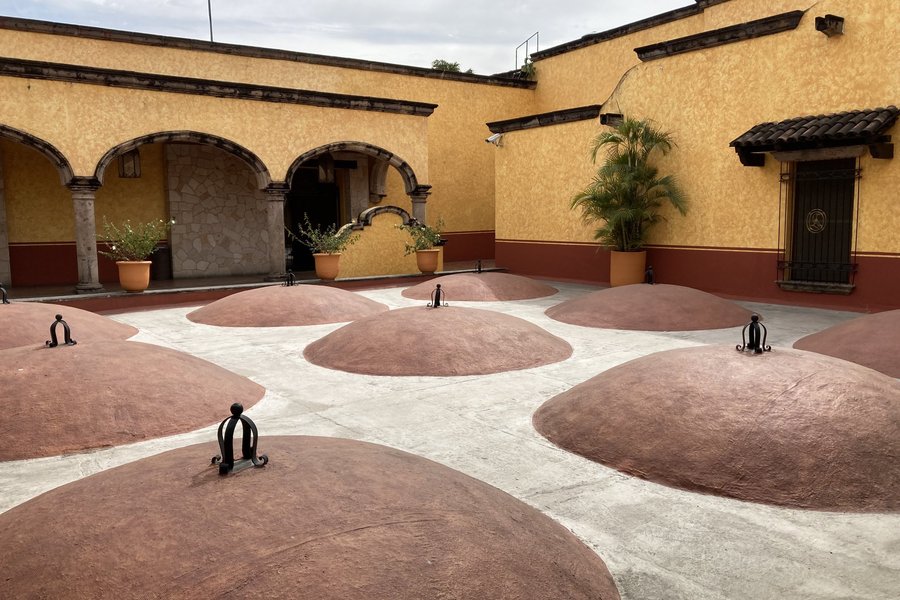
The town of Tequila is only about an hour from Guadalajara, and there are many different distilleries to visit. There are many tours, easily arranged but some seemed pricey to me. I don’t drink as much as when I was younger, and I don’t like taking tour buses. So I just did a solo day trip to one distillery, Tres Mujeres. Even though I had toured a much fancier tequila distillery—with a Mariachi band—years before, I appreciated the simple working nature of this one. There weren’t any tour buses, so I had the place almost to myself. The guides spoke excellent English and answered all my questions.
These days tequila is made in towns outside Tequila and in several states outside Jalisco, but this dusty farm town is the best place to get a sense of the history. Tequila is a fusion of Spanish winemaking and native brewed agave wine, pulque. There are many types of mezcal, but tequila is usually more refined and always made with blue agave in designated areas.
Reading is not the right way to learn about tequila. You really need to smell the various processes and then taste the different products to understand. That’s the best part about coming here, and you can bring back a nice souvenir.
I’m giving only three stars, because my expectations of a world heritage site are very high. Since there are many different distilleries (and tour agents) operating at different standards, your experience here …
Keep reading 0 comments
Most countries can only envy England with their tradition and ability to preserve its rich heritage. There are certainly dozens of well-preserved medieval towns her and only Belgium, the Netherlands and parts of France may come close to it. Therefore, it is sad, that nowadays medieval heritage is lowly regarded as WH material and the UK thinks it has better cards nominating obscure wetlands or moors or a modest park than a great cathedral, a perfect town or a splendid palace that would be easily inscribed if it stood in other parts of the world.
Therefore, it is good news that, after a strange archeological nomination of York has been rejected, York nominated as a town. It has a nice, manageable size but please, do not believe that you can see even its nicest parts in one or two days. We spent four days and still have reason to go back.
The cathedral is the greatest attraction. Even, when I prefer the cathedrals of Wells, Lincoln and Ely, is this is a wonderful building, and you need easily half a day to get even an idea of its treasures. The east window is one of the great windows in the world, the refectory offers an awe-inspiring construction, and its statuary is full of riddles, even for the experts, there is a good museum, and, in the crypt, you can see parts of the former Norman cathedral.
But while this may not be the greatest English cathedral, the …
Keep reading 0 comments
If you are in the Liverpool area, an excursion to Birkenhead is a must: It grew rapidly in the 19th century as an extension of Liverpool in the industrial revolution and was connected to Liverpool in 1886 by the Mersey railway tunnel, the most ambitious tunnel project of the age and you can still admire its splendid ventilation towers on both sides of the river. This could be a good nomination by itself.
The wealth of the town is especially obvious around Hamilton square with one of the highest concentration of protected buildings in the UK. The classical town hall could stand in much larger cities. The check board street pattern is reminiscent of Edinburghs New Town. A visit to Birkenhead Park is pleasurable and even impressive but in a country with the greatest gardens in the world (besides Japan perhaps) it has too much competition to stick out. But it is well known that Frederick Law Olmsted, the architect of New York's famous Central Park was greatly impressed and inspired by Joseph Paxtons Design. How about a double nomination of the world's first publicly funded park and England as an inspiration for Americas most famous Park. The latter would make an excellent WHS all alone!
Just next to Birkenhead is another, even hotter candidate for WH status: Port Sunlight is a wonderful victorian factory village. The houses are by several well-known architects and I would gladly live in any of them! I had even the pleasure last …
Keep reading 0 comments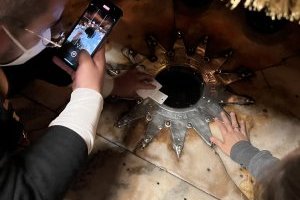
Two years ago, my family and I embarked on what was publicized as a “life-changing journey” to the Holy Land. Our travel agency identified three countries belonging to the Holy Land cluster: Jordan, Israel, and Egypt. However, we actually visited four. The agency missed Palestine, which is literally and figuratively at a crossroad. Palestine encompasses the West Bank, which Israel currently occupies. This includes the Eastern section of Jerusalem and the very infamous Gaza Strip. Palestine shares most of its borders with Israel. Nonetheless, it also borders Jordan to the east and Egypt to the southwest. En route to Israel from Jordan, it is impossible not to notice the Palestinian territory. If I am not mistaken, the border crossing where King Hussein Bridge is located is a Palestinian territory. Currently, 146 of the 193 UN member nations recognize the State of Palestine. As of 2012, the State has elevated its status as an “observer entity” from a “non-member observer state.” This means it has the same status as the Holy See or the Vatican City, awaiting recognition as an independent nation-state. It’s just sad that, until today, the Israeli-Palestine conflict has not ended. The senseless conflict annihilated several innocent people, primarily children, senior citizens, and women.
This post is not about the ongoing war in the Israel-Palestine territories. It is about Bethlehem, the highlight of our trip to this Palestinian territory. However, Bethlehem is also a point of contention in this supposedly Holy Land. Incidentally, when this post was …
Keep reading 0 comments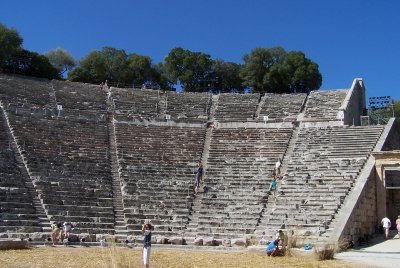
I don't envy the people who have to say which of the ancient Greek theatres deserve UNESCO listing because there are a lot and even some of the small ones I've been to are nonetheless impressive. For example, the huge theatre of Epidavros is famous and well known to most Greekophiles but there is also an absolutely charming and much smaller amphitheatre nearby called the Theatre of Palaia Epidavros. But I will stick to the script and mention a visit to the aforementioned huge theatre at Epidavros.And it is indeed, hugely impressive and is still used for concerts even today.There's also a very nice museum on site with some artifacts that wouldn't be out of place in the national museum in Athens.
Keep reading 0 comments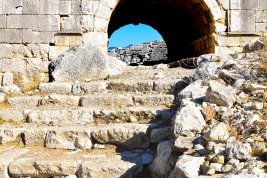
Less visited sites of a lesser known ancient civilization, Letoon and Xanthos are more intriguing than they appear at a first glance. For those visiting the Turquoise Coast of Turkiye, Letoon and Xanthos combine to make a worthwhile day trip.
Letoon
I based myself in Fethiye, which is a small city with good amenities. From its bus station, I easily found a minibus to Kumluova village and let the driver know that I wished to visit Letoon. From where he dropped me off, it was an easy 900 metres walk to the ancient sanctuary. Letoon appeared to me to be well-cared for and had a modern administrative and ticket office on-site. I was the sole visitor for most of my visit.
Not much remains of Letoon's three temples, but its Hellenistic theatre (photo) from 2nd century BCE is well-preserved. The theatre's two vaulted passages are its highlights.
Although Letoon lacks the 'wow' factor, there are small details that one can discover that will make a visit more interesting. For example, near the closed-off entrance to the northeast passage of the theatre, there is a Roman tomb with a carved representation of its toga-clad occupant.
Letoon is a small site and an hour should be sufficient to explore it.
Xanthos
With neither my own vehicle nor intimate knowledge of the minibus routes, I found it easier to simply walk from Letoon to Xanthos. The route between the two sites are part of the much-heralded …
Keep reading 0 comments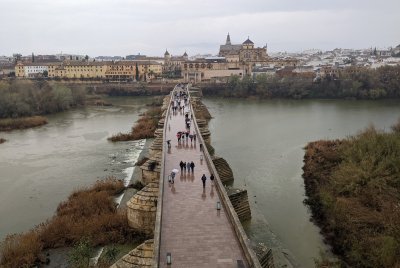
I did this as a joint-trip to Córdoba and Sevilla in March 2025 with my wife and a friend of ours, and while I wanted to like Córdoba more, I think Sevilla ultimately beat it out. (Perhaps to the chagrin of someone like Clyde here on the site.) However, Córdoba is still worth seeing!
Everyone raves about the Mezquita-Catedral ("Mosque-Cathedral") and they are right to – I recommend planning in a decent amount of time for yourself to spend here, at least two or three hours. There is so much to see on every wall, floor, or ceiling, it reminded me of the cathedral in Toldeo, Spain or St John's Co-Cathedral in Malta. However, the audio guide is slightly lacking, sadly, and the map they give you to accompany it is a bit confusing to try and navigate. All three of us got lost while wandering around the Mosque-Cathedral trying to follow its guide.
People talk about visiting the Calleja de las Flores ("Alley of Flowers") and all of the little winding streets around it that are chock-full of small shops and places to eat. I do recommend visiting this, and it blends into the Judería ("Jewish quarter"). The synagogue is worth visiting for ~15 minutes and it is one of four that exist in Spain.
It's worth buying the combined ticket to see the Alcázar de los Reyes Cristianos ("Alcazar of the Christian Kings"), the Baños del Alcázar Califal (the hammam baths of the Alcazar Calif), …
Keep reading 0 comments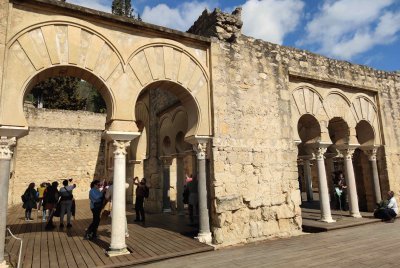
I was pretty underwhelmed with this site during my March 2025 visit (apparently just days after Alikander99 was there!) but I believe this is because I did not hire a guide.
There is a bus that runs twice a day up to this site from Córdoba (a WHS site in its own right) and it drops you off at a museum where you begin by watching a amateurly-animated (probably by a university group at some point), but very informative video in a small theatre. After the movie ends, you are released into the proper museum that they have with plaques, and artifacts, and the like. This part is great, I recommend the museum!
After the museum you take a second bus up to the actual archealogical site itself. This, sadly, is where things take a downturn. The archealogical site is decently large, but there is no signage whatsoever letting you know what anything is that you are seeing, unless you happen to have a photographic memory of what you read in the museum. I'm okay with keeping a site "preserved" by not having signs, but there should be some way to communicate to people what they're looking at, otherwise it's just a bunch of ruins. If you didn't book a private tour through a third-party company, the only way to know what you're looking at is through a barely-advertised audio guide app that is shared by lots of different sites in the world, and does not …
Keep reading 0 comments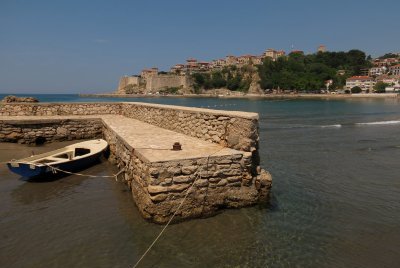
Though I've read plenty of reviews here, this is my first one and I'm still a bit uncertain how to approach reviewing sites. It would be easy to just rate based on how I enjoyed a place and I certainly liked Ulcinj. It has a really nice location right by the Adriatic: there's a small sandy beach in the very centre, overlooked by a mosque, which gives it an exotic flair. Added to all this is the TWHS Old Town on a small rocky outcrop, once again spectacularly located.
However, when visiting a WHS, I expect something spectacular and/or unique. I always check if there's a WHS or TWHS when planning a trip but I'll gladly skip, say, an industrial or prehistoric site and opt for an unlisted pretty town or scenic natural spot instead. Ulcinj wasn't even a TWHS when I visited in 2017, it was added the following year. The reason I went there was that I found it interesting that it's the only place in Montenegro with an Albanian (and Muslim) majority, plus it looked nice on photos.
It was indeed nice and had a different vibe due to its Albanian population, though the centre is really small (and the TWHS old town is even smaller, really just a few houses and a castle of modest dimensions), the rest of the town is quite modern and a bit chaotic. I think it's worth a visit but there are simply so many beautiful towns along the …
Keep reading 0 comments
While the Basilica of St. Michael might be the most notable monument of Bordeaux, the most memorable part of our stay was an excellent bicycle tour that we took. On our own, we probably wouldn't have dared attempting bike riding in the center of such a big city, but the guide knew the perfect route on lesser-used streets and bike paths. Walking around on our own, we had seen the basilica and some other grand monuments, but the bike tour took us to some other interesting parts, such as the ruins of the roman amphitheater and the unconventional Darwin shopping hall across the river from the main downtown area. Near the Gross Cloche, our bike tour guide also introduced us to the local cannelés and explained the connection between the pastry and the french colonial era, represented by the rum, vanilla, and spices in the cakes. The Jardin Public near downtown was also a highlight, and though it isn't a distinguishing WHS feature, it is a beautiful aspect of the city.
October was a wonderful time of year to visit this pleasant city, and enjoy its pastry shops and cafes. We stayed the opposite direction from downtown from the train station, so we got to walk through some other neighborhoods and enjoyed sampling some dishes at the Halle Boca food court.
Keep reading 0 comments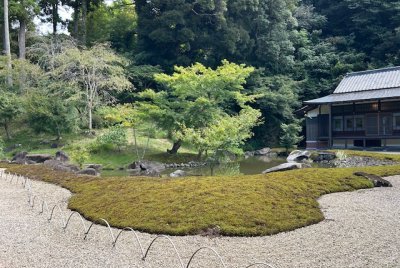
Visit date(s): September 23, 2024 (Autumnal equinox holiday)
Nearby sites on trip: None nearby
Overnight location: Tokyo, less than half hour walk from Tokyo station
Location(s): This order is mostly downhill from kita-Kamakura station, returning to Tokyo via tram and Kamakura station:Engaku-jiKencho-ji (photo)Tsurugaoka Hachiman-guWakamiya OjiKotoku-in, including the Daibutsu
Travel method(s): Train, tram and foot (9 km!). Most sites are built into hillsides, so there are a lot of hills and stairs.
Travel duration: Train trip: normally ~ 1 hour each way. There were 2 delays for safety checks on our return trip.
Visit duration: More than 5 hours in Kamakura. We also visited Zeniarai-Benten, Sasuke-Inari-Jinja and Hasedera during the visit.
OUV: The view from Tsurugaoka Hachiman-gu down Wakamiya Oji is certainly impressive, demonstrating town planning. The temple buildings and landscapes illustrate the traditions, ideas and beliefs of samurai culture. Overall worthy.
Best of: The first 2 temples we visited are both zen — serene and calm places.
Worst of: Tsurugaoka Hachiman gu was very crowded.
Keep reading 0 comments